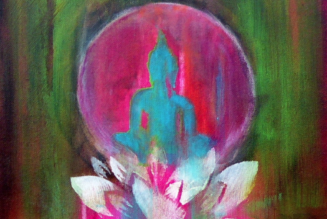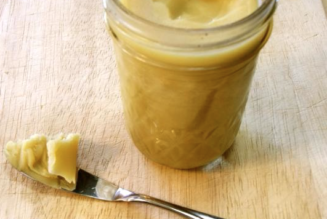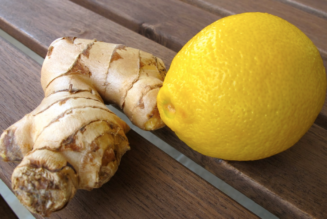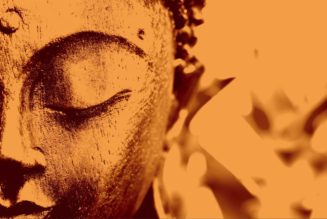Disclaimer:
All content included on this website (including, but not limited to, images, photos, graphics and text) is the property of ‘Healthy Ayurveda’ and ‘Vedic Sage’ and as such is protected by US and international copyright and other intellectual property laws.
The Disease Process According To Ayurveda
The ancient writings of Ayurveda describe “Samprapti” as the disease process which, if understood properly, can actually detect and address certain health conditions at each and every stage; i.e. addressing the root cause. According to this philosophy [i.e. samprapti/pathogenesis], there are six stages for the disease process.
The Six Stages Of Disease:
1. Accumulation Of Doshas – Sanchaya
2. Aggravation/Provocation Of Doshas – Prakopa
3. Spread Of Doshas – Prasara
4. Deposition/Localization Of Doshas – Sthana Samshraya
5. Manifestation Of Qualitative Changes – Vyakti
6. Differentiation & Destruction Of Tissue – Bheda
1. Accumulation Of Doshas [Sanchaya] 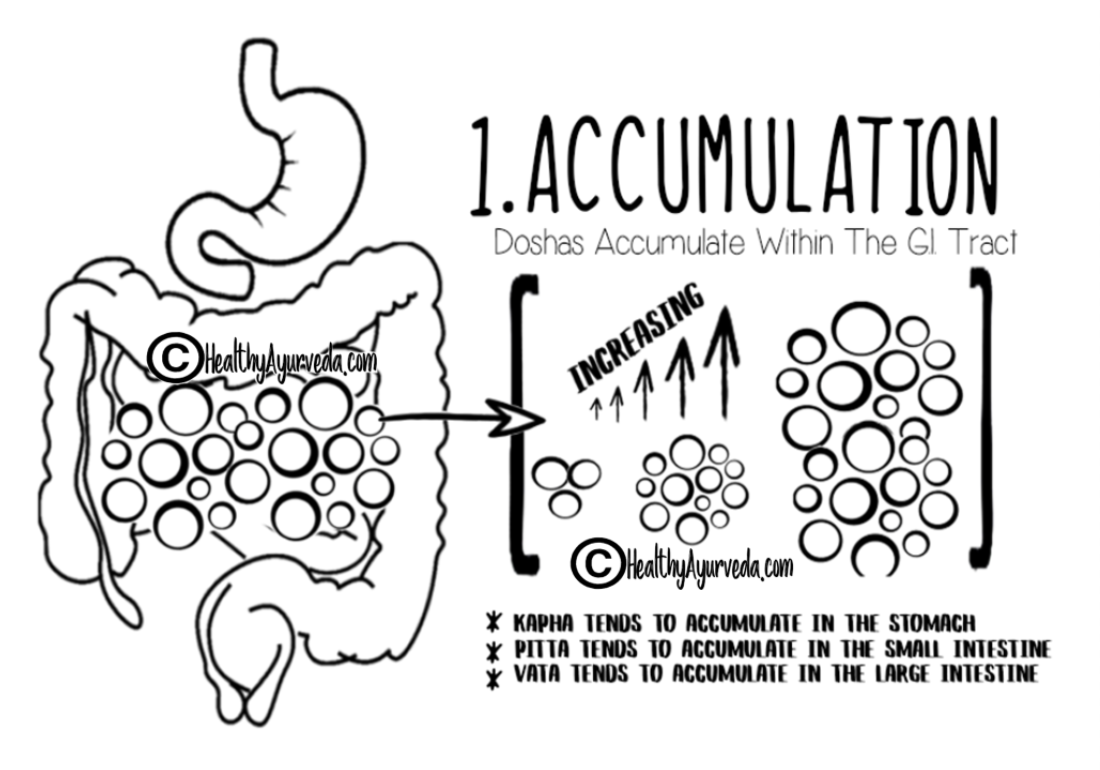
Accumulation of doshas first takes place in their normal location. For example, vata tends to accumulate in the large intestine/colon, pitta accumulates in the small intestine, and kapha accumulates in the stomach.
What Might Increase Doshas?
Accumulation Of Vata Dosha:
Doshas are increased by certain lifestyle considerations [i.e. food and behavior]. For example, factors which promote and increase vata qualities [i.e. dry. light, rough, subtle, cold, mobile] are foods which have predominately pungent, bitter, and astringent tastes. Similarly, dry leafy vegetables, legumes, beans, peas, etc. tend to increase the dry and rough qualities of vata which tends to produce symptoms of constipation, abdominal distention, and excess gas production in the colon.
Accumulation Of Pitta Dosha:
Food which is predominately pungent, salty, sour and hot in potency tends to promote the intrinsic qualities of pitta [hot, sharp, light, liquid, oily] and therefore increases pitta dosha. Similarly, certain lifestyle considerations such as emotional states [i.e. anger and grief] and seasonal/environmental factors [i.e. summer season, midday/noon, mid-digestion] also tends to increase pitta dosha within and produces symptoms of heat/burning sensation and slight discoloration of yellow in the white of the eyes.
Accumulation Of Kapha Dosha:
Food that has predominately sweet, sour, and salty tastes with oily and heavy qualities [i.e. cheese, cream, butter, ghee etc.] tends to increase the intrinsic qualities of kapha [heavy, cold, dense, oily, liquid] and therefore kapha increases within kapha’s primary location, i.e. the stomach. Increase and accumulation of kapha produces symptoms of heaviness, lethargy, fullness of stomach and low appetite.
Intelligent Cravings Of The Body …
As doshas begin to accumulate within the primary sites [i.e. vata in the colon, pitta in the small intestine, and kapha in the stomach], the inner intelligence of the body begins craving qualities opposite to which is accumulating in the body.
For example, if vata qualities [dry, light, rough, subtle, cold, mobile] begins to accumulate there will be a desire for oily and heavy foods with predominant tastes of sweet, sour and salty tastes and the desire to sleep and rest. If pitta qualities [hot, sharp, light, liquid, oily] begins to accumulate there will be a desire for cold and dull qualities with sweet, bitter, and astringent tastes. If kapha qualities [heavy, dense, slow, oily, cold] begins to accumulate there will be a desire for hot and spicy foods with pungent, bitter and astringent tastes to help reduce the accumulation of kapha dosha. This desire for the opposite qualities should not be neglected because this is the inner intelligence of the body attempting to pacify the accumulation of doshas within.
2. Aggravation Of Doshas [Prakopa] 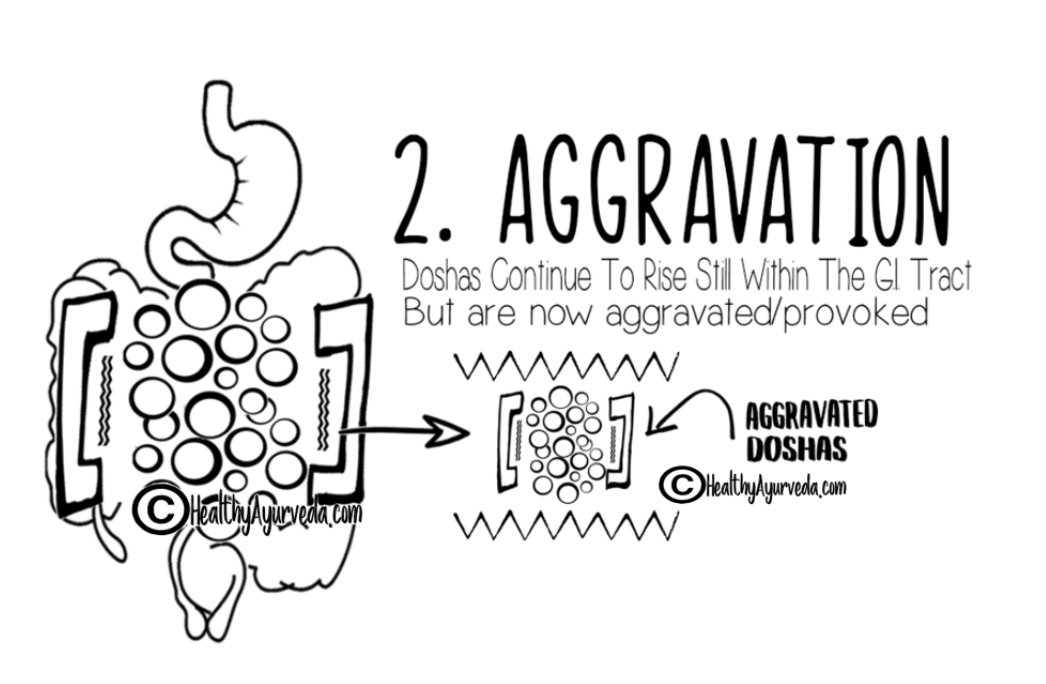
If certain lifestyle considerations [i.e. food/emotional states] and seasonal factors continue this will increase doshas within their primary location which will eventually cause doshas to reach their maximum capacity in their respective sites … and the doshas will become aggravated/provoked.
The aggravation of doshas will cause symptoms similar to the above-mentioned symptoms described in ‘accumulation’ but symptoms will become more significant. Vata symptoms during this stage of aggravation [prakopa] will be increasing pain in the flanks or mid-back, hyperperistalsis, gurgling and even breathlessness. Pitta symptoms will be indigestion and heartburn and kapha symptoms will be cough, congestion, heaviness.
IMPORTANT POINT:
Despite the doshas accumulating and becoming aggravated, the aggravated dosha is still relatively easy to remove since they are still located within the digestive system [i.e. vata in the colon, pitta in the small intestine, and kapha in the stomach]. However, once the doshas begin to spread from the digestive tract into the general circulation and into peripheral tissue management becomes increasingly more difficult and more complex.
3. Spread of Doshas [Prasara] 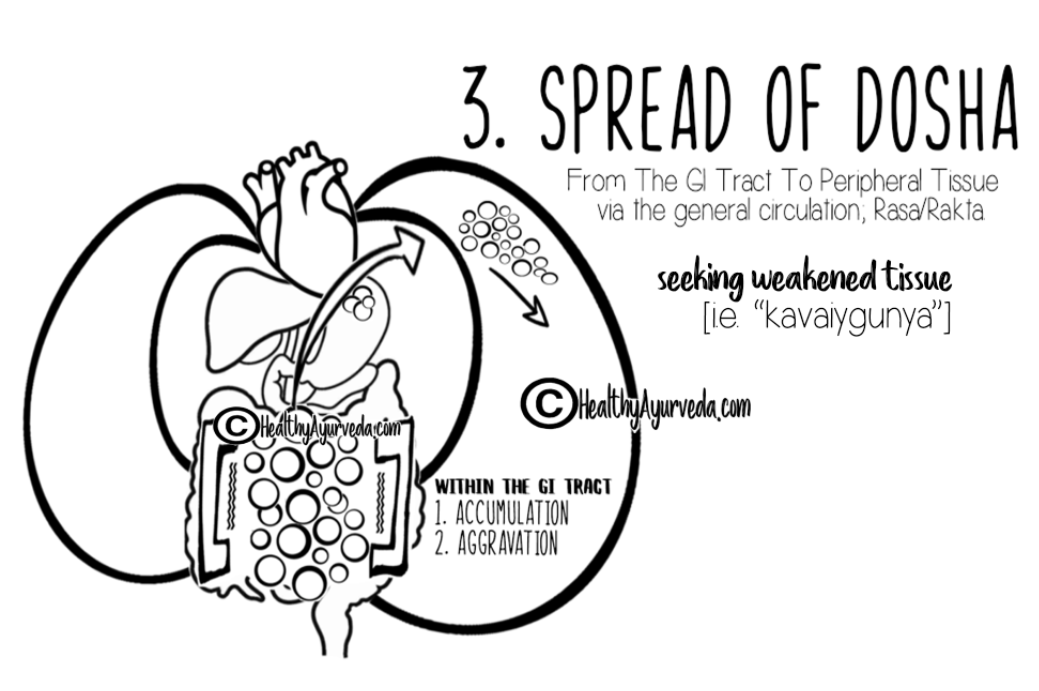
Upon further increase and aggravation of dosha allows for the driving force which moves the dosha from the gastrointestinal tract spreading its way into the general circulation [rasa/rakta dhatu]. Due to certain affinity of qualities [i.e. ‘like increases like’] doshas will tend to spread to their secondary sites.
Spreading To Secondary Sites:
Vata dosha tends to spread to the ears, skin, bones and thighs. This will create symptoms of ringing in the ears, dry skin, and cracking/popping and pain in the joints.
Pitta dosha tends to spread to the stomach, eyes, sweat glands, skin and subcutaneous fat tissue which creates symptoms such as nausea, acid indigestion, burning and irritation to the eyes, inflammatory skin conditions [i.e. rash, hives, urticaria, eczema].
Kapha dosha tends to spread to the lungs, sinuses, lymphatic system, breast tissue, mouth and head and will create symptoms such as congestion, runny nose, lymphedema/swelling and lethargy.
4. Deposition/Localization [Sthana Samshraya] 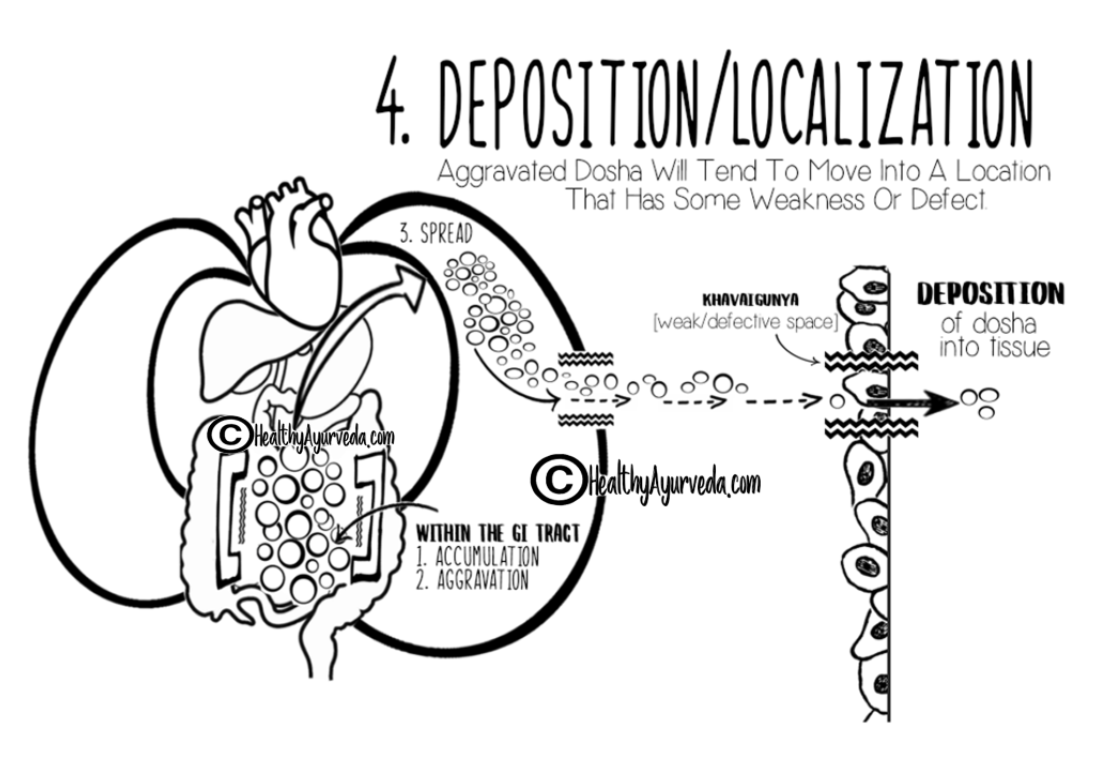
As disease progression [samprapti/pathogenesis] continues, the aggravated dosha which is spreading via the general circulation will eventually move into a defective location which has weakness and poor tissue integrity; this point is called “Khavaigunya”.
As the dosha enters the weakened entry point [i.e. khavaigunya] of peripheral tissue the aggravated dosha deposits and localizes its qualities upon the peripheral tissue which will eventually influence the structure and function of the tissue. The unique combination/amalgamation of dosha and dhatu [peripheral tissue] is the fourth state of samprapti which is called sthana samshraya.
5. Manifestation [Vyakti]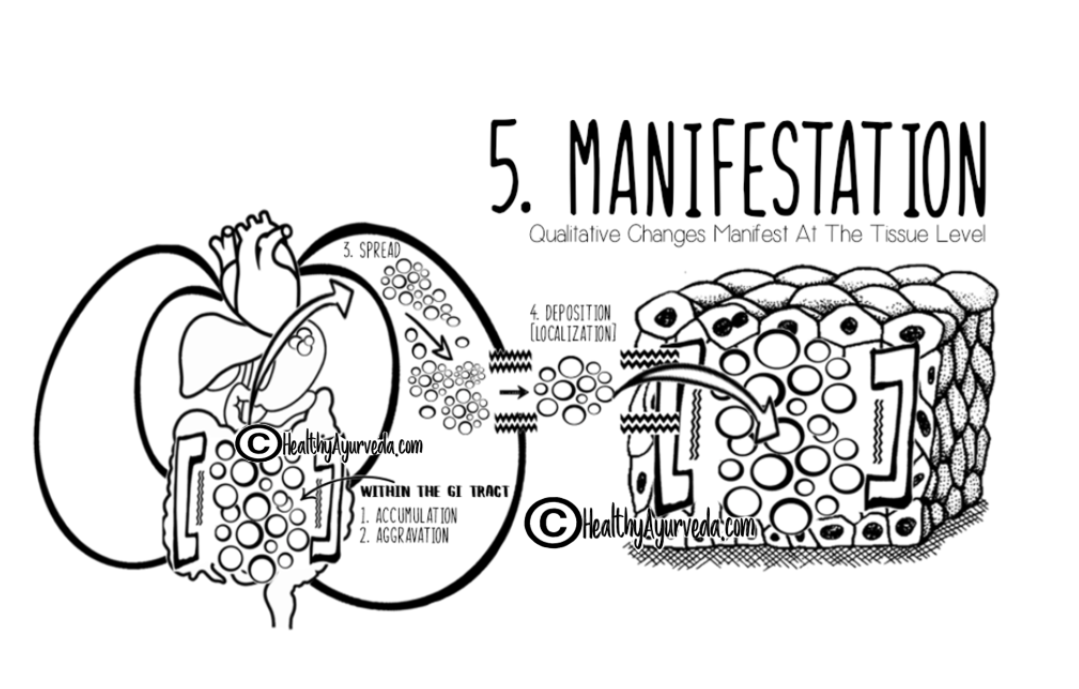
During this stage of disease progression [samprapti/pathogenesis], the aggravated dosha has not only entered into a weakened/defective [khavaigunya] entry point of the peripheral tissue – BUT – the qualities of the aggravated dosha now begins to override the functions of the peripheral tissue manifesting the classic signs and symptoms of a particular disease.
6. Differentiation & Destruction Of Tissue [Bheda]
In this final stage of samprapti, not only are functional changes of peripheral tissue/organs/channels become evident but structural changes occur thereby increasing disease severity as well as introducing other associated complications of the disease process.
All content included on this website (including, but not limited to, images, photos, graphics and text) is the property of ‘Healthy Ayurveda’ and ‘Vedic Sage’ and as such is protected by US and international copyright and other intellectual property laws.
Disclaimer
The sole purpose of these articles is to provide information about the tradition of ayurveda. This information is not intended for use in the diagnosis, treatment, cure or prevention of any disease. If you have any serious acute or chronic health concern, please consult a trained health professional who can fully assess your needs and address them effectively. If you are seeking the medical advice of a trained ayurvedic expert, call or e-mail us for the number of a physician in your area. Check with your doctor before taking herbs or using essential oils when pregnant or nursing.
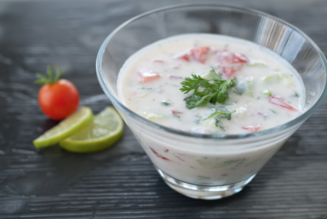
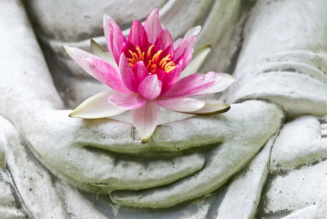
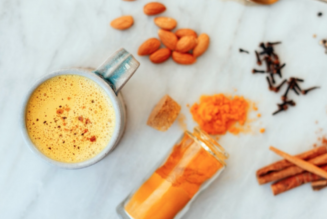
![Female Health: Amenorrhea [cessation of menses] – An Ayurvedic Perspective](https://healthyayurveda.com/wp-content/uploads/2015/07/1.-Amenorhea--327x219.png)
